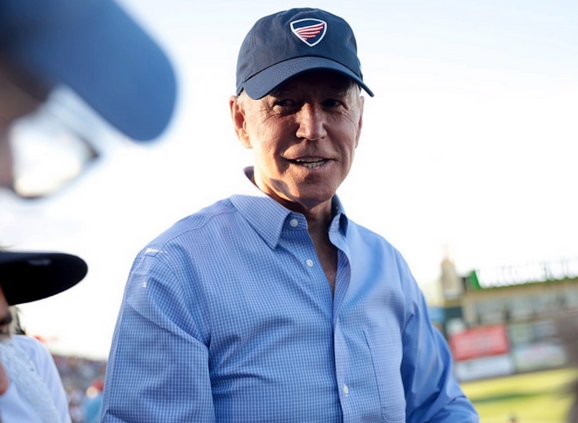It’s always infrastructure week somewhere.
Washington is in the thick of negotiating two major infrastructure bills — and a constellation of smaller ones — that could reshape American transportation for decades. And we at Streetsblog want to make sure that the priorities that matter most to sustainable transportation advocates don’t get lost in the shuffle.
Here’s a quick, layman’s-language primer on where things stand on Biden’s infrastructure stimulus package and the next surface transportation reauthorization, how they’re different, and why it matters.
This article will be updated periodically as new information becomes available, so bookmark it here.
Wait, are there really two giant infrastructure bills at once?
Yes. We know, it’s confusing.
One is a giant, one-time infrastructure stimulus package that will invest a ton of money in the nation’s transportation infrastructure (and other forms of infrastructure); the other is a smaller (but still pretty huge) surface transportation reauthorization bill that sets the funding and rules for various ongoing DOT programs. America gets a new reauthorization bill roughly every five years, but a stimulus of this scale is once in a generation.
What is the infrastructure stimulus package?
The idea that “infrastructure week” is a little like the movie Groundhog Day has become a cliché in Washington for a reason: pretty much no president in recent memory has been able to get Congress to approve a significant infrastructure investment outside of the surface transportation reauthorization, despite the fact that spending more on infrastructure is, theoretically, an issue upon which both parties agree. (Though historically, they have only really agreed on the need for more highway spending.)
Biden wants to change that with the American Jobs Plan, which started as a behemoth $2.25-trillion package that tackles a mess of infrastructure priorities under the banner of rebuilding the economy post-pandemic. With spending spread out over eight years, the plan would be paid for by hefty tax hikes on corporations, and would include a bunch of things that aren’t hard, physical transportation infrastructure, which is a source of contention as the parties negotiate over the bill.
What is the surface transportation reauthorization?
Most baseline federal transportation spending programs expire every five years, and when that happens, Congress is required to reauthorize that spending and confirm the amount which each program will get, as well as what rules will govern the distribution of those funds — and this year, time is finally up.
Congress has a huge opportunity in the current reauthorization to set new funding standards for sustainable transportation and reduce funding for programs that build more dangerous roads, and the decisions they make in the next few months could become our national norm well beyond the scope of the next five years.
Where does the American Jobs Plans stand?
- For various reasons that are the subject of a lot of pundit speculation right now, Biden has said he’s determined to pass the American Jobs Plan with bipartisan support, rather than using his one remaining reconciliation trump card this year to pass it without them.
- Senate Republicans answered Biden's reach across the aisle on April 22 when they released a counter-offer to the AJP called the Republican Roadmap that slashed all of the bill’s most critical climate safety, and equity programs, while boosting funding highways and offering zero plan to pay for any of it. (And in case you're wondering: yes, April 22 is Earth Day.)
- Progressive Democrats in the House countered the counter-offer on April 29 with the THRIVE Act, which would invest $1 trillion a year into a wide range of initiatives, including transportation initiatives, for 10 years.
- Then on May 19, House Republicans released their own counter-offer, which is smaller and even more aggressively focused on highways than Senate GOP members.
- As a show of good faith, Biden presented the Republicans with a skinnier version of the AJP on May 25, cutting about $550 billion from his initial offer. Critically, most of the cuts had to do with research, broadband internet, and car-focused road and bridge projects rather than transit, road user safety or equity. Republicans immediately rejected the $1.7-trillion proposal, and missed a Memorial Day deadline Biden had set to come to an agreement.
So many pathways!
— Yonah Freemark (@yfreemark) June 4, 2021
- Biden's American Jobs Plan sketch proposal
- House T&I Dems INVEST bill
- House T&I GOP STARTER 2.0 bill
- Senate EPW bipartisan highway bill
- Future Senate Banking transit bill
- Future Senate Commerce rail bill https://t.co/EbRccTTgfg
- Now the AJP is in limbo, but that doesn’t mean it’s dead in the water. Biden is reportedly considering a “range of pathways” to advance the agenda, which includes hacking off parts of the massive bill and folding them into the surface transportation reauthorization, as well as other standalone legislation. But it’ll be critical for advocates to stay on top of the news and pressure lawmakers not to let the planet- and pedestrian-saving aspects of the AJP get lost in the shuffle as its constituent elements, potentially, get parceled out across multiple bills that are all subject to their own stripping down by lawmakers.
Where does the surface transportation reauthorization stand?
- First, a little background: back in September of 2020, America’s current surface transportation bill, the FAST Act (Fixing America’s Surface Transportation), came up for expiration. The FAST Act has long been a thorn in the side of transportation advocates, not least because it devotes 80 percent of funding to roads and interstates and less than two percent to active transportation infrastructure.
- In anticipation of the FAST Act expiring, House Democrats introduced a new reauthorization last June, the $1.5-trillion INVEST Act, that was widely applauded by sustainable transportation advocates for holding states accountable for fixing the highways they have before they build new ones and upping money for protecting vulnerable road users. (There was also a ton of money for electric cars, which was a little more divisive.) Then-Senate majority leader Mitch McConnell called the bill “a Green New Deal masquerading as an infrastructure bill” and dismissed it as DOA, but it might not be quite so dead yet…more on that in a minute.
- With the INVEST Act stonewalled by the GOP, Congress opted to settle for renewing the FAST Act for one more year, in part because it was an election year and the Democrat-controlled House wanted to see if the party could retake the Senate and pass a more ambitious bill than the GOP would approve while it held power.
- But despite the fact that the Democrats did narrowly win the Senate, lawmakers on the Senate Environmental and Public Works Committee decided to use that newfound power to release the anemic bipartisan Surface Transportation Reauthorization Act of 2021, which was quickly panned for basically undercutting all the good stuff Biden proposed in the AJP and giving America the FAST Act, Part II: Faster and More Furious.
- Luckily, House Democrats had a little more sense, and reintroduced the INVEST Act on June 4 — and they added on about $52 billion in spending and a handful of new provisions, many of which that are similar to critical programs that advocates fear will get slashed from the American Jobs Plan during the negotiation process, like a fund to reconnect BIPOC communities that were sundered by highways. Including those programs under reauthorization also gives them a better chance of being renewed in the next reauthorization, and leaves them less vulnerable to cuts if the GOP reclaims the House in two years.
If the GOP takes control of either chamber of Congress next year, many of those transit/rail GF authorizations in FY 2024-2026 won't come to pass or will be drastically reduced, but the contract authority will stay intact. So just remember, those two types of $ are not the same.
— Jeff Davis (@JDwithTW) June 4, 2021
- The House and the Senate have until September to agree on a new reauthorization bill, or else renew the FAST Act again, which pretty much no one in the sustainable transportation movement wants. As the clock ticks down, it’s essential that advocates remain vigilant of what form the reauthorization takes, and make sure that it creates a strong foundation for the nation’s transition away from single-occupancy, gas-powered car dominance.
This article will be updated as the above legislation evolves.






